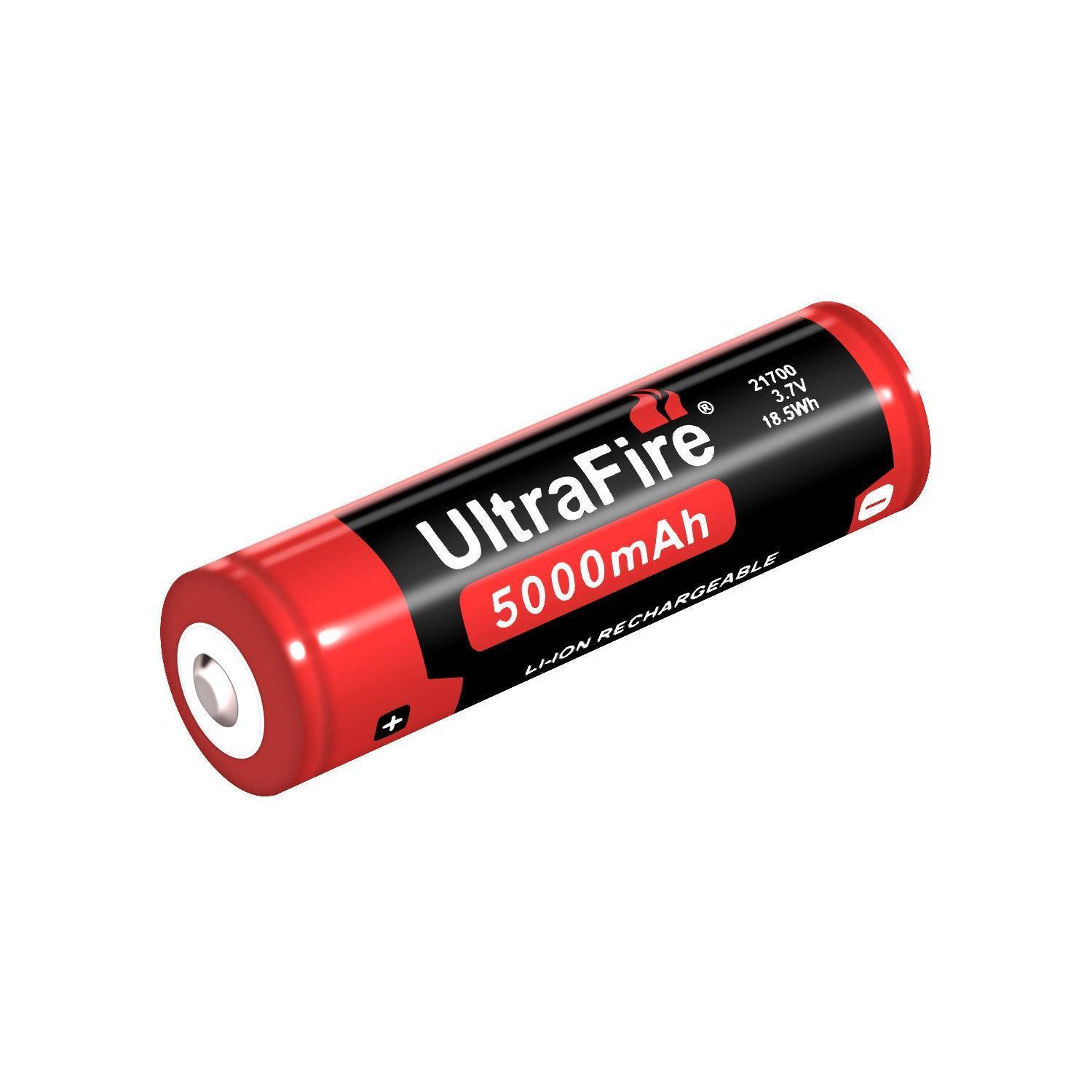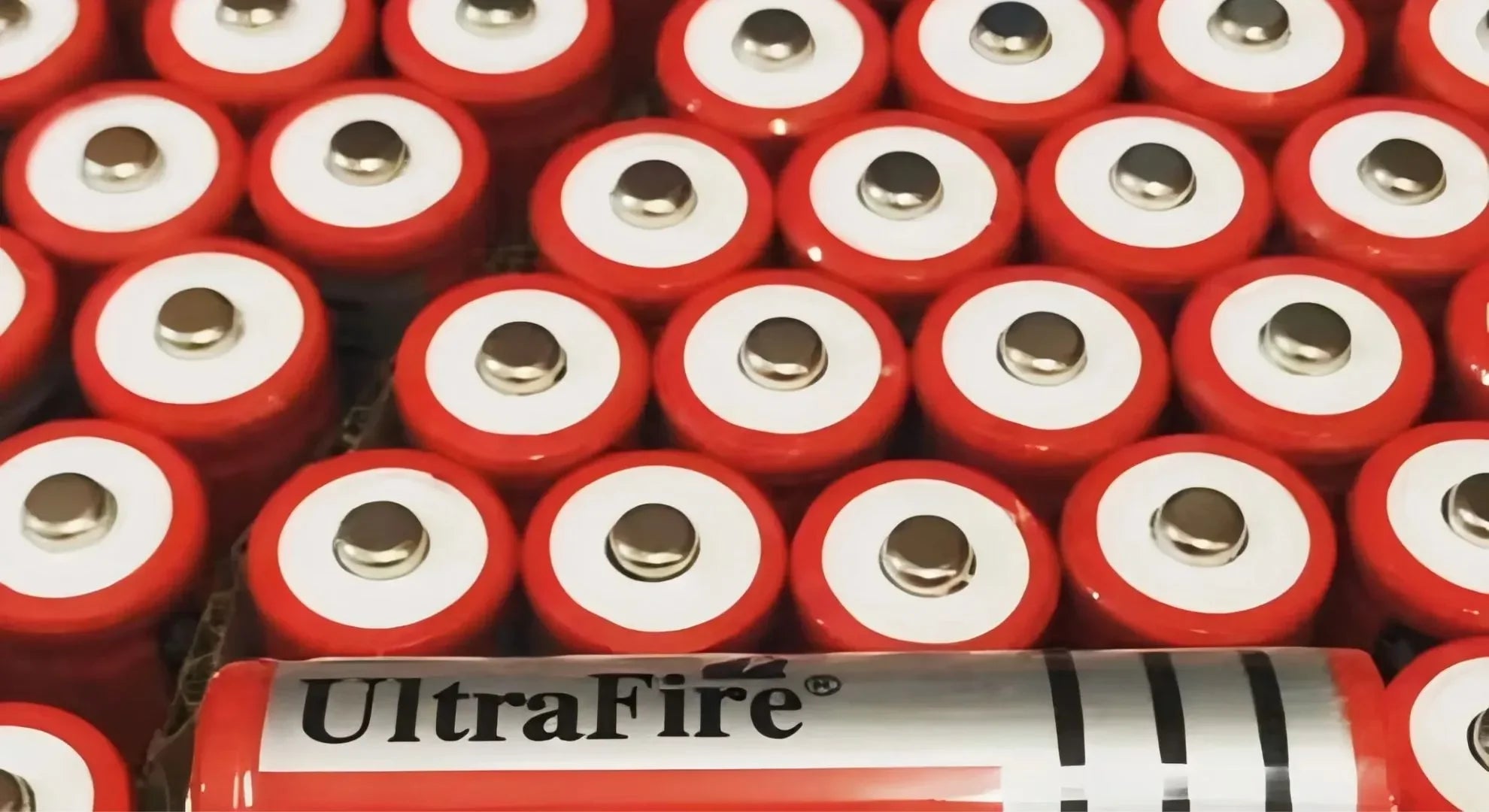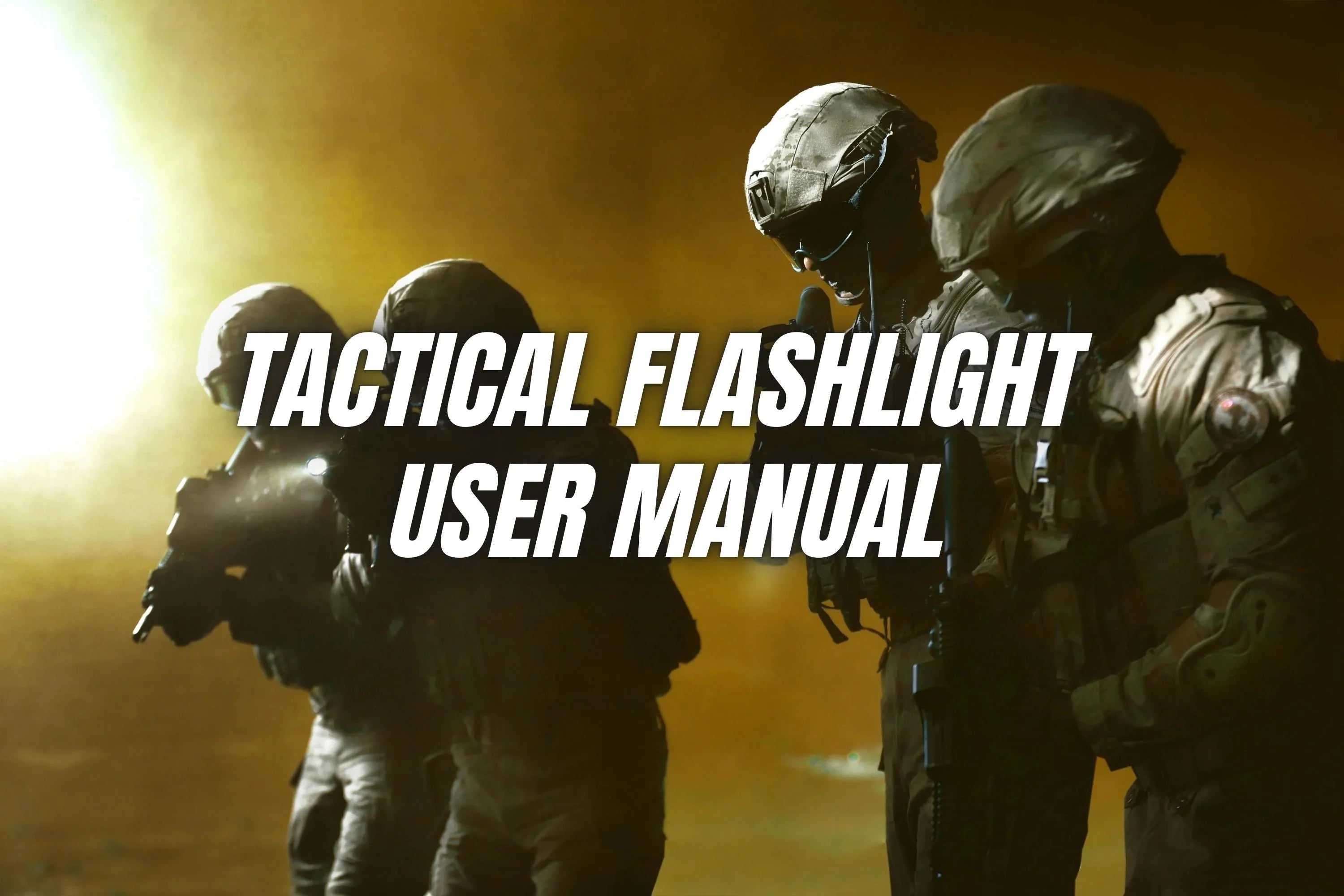Red Light (Stealth & Preserved Night Vision)
Many hunting flashlights use a deep red LED (≈630 nm). Red light has a very long wavelength, which our eyes perceive as gentle dim glow. Crucially, most game animals (deer, elk, etc.) lack photoreceptors for red, so a red beam appears almost gray or invisible to them. This makes red lights ideal for moving undetected. You can navigate dense woods, set up camp, or field dress game under a red beam without spooking animals. Red light also preserves human night vision: it doesn’t force your eyes to re-adapt as white light does. In practice, use the red mode during pre-dawn walks, late-night gear checks, or in thick brush where stealth is paramount. For example, walking quietly along a deer trail in heavy timber, you’d use red light so that the nearest deer remain calm even if they notice a faint glow.
Red-mode flashlights often include multiple brightness levels. Keep it dim enough to avoid silhouetting yourself. This low-intensity red is perfect for reading maps, checking gear, or cooking at your blind before shooting time. In dark forests or brush, a red beam lets you see close surroundings (downed limbs, nearby rock) while keeping your eyes dark-adapted. Brands like UltraFire even offer tri-color lights (red/green/blue LEDs) so you can switch on red during stealthy approach or camp tasks.
Green Light (Long-Range Spotting)
Green LED flashlights emit mid-spectrum light (~520 nm) that the human eye sees very brightly. Green beams penetrate foliage, mist, and even light snow glare better than red or white. Hunters favor green for scanning open areas and spotting eyes at distance. In practice, switch to green when you need to illuminate far away terrain. A green beam can reach dozens of yards farther than red at the same power (humans are more sensitive to green), letting you scan ridgelines, fields, or lakeshores for movement. In fact, green light’s longer wavelength means it cuts through fog and haze better than shorter colors, enhancing visibility in humid or misty conditions.
Unlike bright white light, green appears more natural and tends to spook deer less. Hunters report that a green flashlight highlights the contrast of animal eyes and coats against vegetation, making game pop out on the landscape. Use green in open fields, meadows, or snow-covered terrain to find deer or coyotes far off. For example, sweeping a green beam across a field at night might catch the reflection in a buck’s eyes 150 yards away. According to hunting guides, green light “is a favorite for nighttime hunting” because it “is less likely to spook animals like deer or wild boar” while maximizing visible range.
Blue Light (Blood & Trace Tracking)
Blue flashlights (around 470 nm) are a forensic hunter’s tool. Many biological materials (especially blood and other body fluids) fluoresce under blue light. In other words, bloodstains and tissue glisten brightly in a blue beam. Hunters often use blue to trail wounded game. When used on grass, dirt, or underbrush, a blue beam makes a thin blood trail stand out sharply. As one professional source notes, a blue filter “causes red [blood] to stand out more clearly in the field”. In practice, right after a shot, switch on the blue light to follow the animal’s drop of blood through the woods. Even slight spotting or smears will become visible.
Beyond blood, blue light can reveal other details (it’s also used for detecting bodily fluids or certain plant oils). Use blue mode carefully, however: game animals do see blue wavelengths (deer eyes have S-cones tuned to blue), so a blue beam can alert wary animals. For this reason, blue is best left for tracking only, not general scouting. Example: in dense woods after a shot, sweep a narrow blue beam around the last known point; any blood droplets on leaves or dirt will glow. In practice, many hunters cycle through white, red, and blue modes in a sequence to cover search, tracking, and night-vision tasks.
Infrared (IR) Light (Invisible Illumination)
Infrared LEDs emit at ~850–940 nm – just beyond human vision. An IR flashlight beam is invisible to the naked eye, so it won’t alert animals or other people. IR is not for unaided vision: it only works when you’re looking through a night-vision device (goggles, scope, or monocular). In such gear, incoming IR light bounces off objects and is amplified into a greenish image on your eyepiece. This is ideal for covert night hunting or surveillance. For example, you might shine an 850 nm IR beam across a field while wearing NV goggles to locate hogs well beyond the reach of a red/green beam. A built-in IR illuminator can extend your NV device’s range by hundreds of yards.
Not all IR is equal: 850 nm IR is near the visible range. It provides the brightest night-vision image and longest throw (often several hundred yards), but it gives off a slight red glow that humans can just barely see. 940 nm IR is completely invisible to us, making it truly stealthy, but it doesn’t shine quite as far (and yields a slightly grainier NV image). In either case, any IR light is invisible to game animals and will not spook them (they simply can’t see that part of the spectrum).
How it works: Night-vision devices amplify infrared photons in a scene. They need some IR to create an image. In moonless or heavily forested nights, an external IR flashlight is the easiest way to light up the scene. The IR photons reflect off animals or terrain and enter your scope, which amplifies them. Essentially, you are “painting” the scene in invisible light. For safety, remember that IR light can heat tissue: prolonged exposure to intense IR can damage eyes. Never look directly into a powerful IR illuminator or flash it in anyone’s eyes.
Terrain examples: IR is useful in any pitch-dark environment where you use NV gear. Try it in deep woods or swampy areas at night – you’ll see animals clearly on your scope without them ever knowing. (Note: even though IR is invisible, NV goggles still detect the red glow of 850 nm lamps – only 940 nm is truly invisible.)
Color Beams Comparison
| Color | Wavelength (nm) | Typical Use | Animal Visibility | Range | Ideal Terrain |
|---|---|---|---|---|---|
| Red | 620–750 (visible red) | Stealthy camp/tent use; preserving night vision | Nearly invisible to deer/elk | Short–mid range | Dense woods, brushy areas |
| Green | 495–570 (visible green) | Long-range scouting and eye-shine spotting | Seen by animals but less spook than white | Medium–far (hundreds of yards) | Open fields, forests, snow |
| Blue | 450–495 (visible blue) | Blood/fluorescent tracking; detail work | Visible (high contrast to blood) | Medium | Dense cover, blood trails |
| IR | ~850–940 (infrared, invisible) | NVG illumination (night-vision only) | Invisible (no animal detects it) | Very long (hundreds of yards with NV) | Any (use with NV in darkness) |
Design and Performance Features
When choosing a hunting flashlight, convenience and durability are key. Look for one-hand operation (e.g. a tailcap button or easy mode switch) so you can operate the light while holding a rifle or climbing. A simple UI with memory modes is ideal: for example, some flashlights allow you to toggle between white, red, green, or blue modes with one long-press or a separate color button. The housing should be rugged aircraft-grade aluminum or stainless steel, with an IPX6–IPX8 waterproof rating for rain and snow. In practice, compact tactical flashlights (around 200–300 lumens) work well for quick scans, while larger models with high-output LEDs (1000+ lumens white light) are best for distant spotting. Many rechargeable hunting lights (like those from UltraFire) use a 18650 Li-ion battery for maximum runtime and power. Always carry spare batteries or a charger – in cold weather battery life drops, so consider models with a battery-level indicator or USB-C charging port for field top-ups.
Other convenience features to prioritize:
-
Variable Brightness: Multiple lumen levels and an SOS/strobe mode (for emergencies). Being able to dial down to a low red or blue setting saves power while still illuminating short distances.
-
Beam Focus: Adjustable zoom/flood function lets you switch between a wide floodlight and a focused spotlight. Wide flood is great for map reading or close woods work, while a narrow beam is better for long-range scouting.
-
Physical Durability: Choose shockproof designs (hard anodizing) that can survive drops on rock. A good hunting flashlight often has textured grip, an o-ring seal at the tailcap, and may be nitrogen-filled to prevent fogging. Many hunting flashlights are rated as dustproof or water-resistant to survive rough terrain.
-
Weight and Size: Balance power with portability. A lighter compact flashlight (about 100–200 grams) is easy to carry in pockets or vest pockets. Heavier, larger lights (with removable belt/patrol clips) offer longer runtimes but may be bulkier.
By focusing on these features – one-handed switches, solid construction, long battery life, and multiple brightness modes – you ensure the flashlight is a reliable partner in the field. For example, a popular rechargeable model might offer ~2000 lumens white, 500 lumens green, and 100 lumens IR modes with a runtime of several hours on high. Durability is essential: look for models advertised as rugged or water-resistant, as wilderness use can involve rain, snow, or accidental splashes.
FAQ: Frequently Asked Questions
-
Q: How far can different colors illuminate? Generally, green and white LEDs (being brightest to our eyes) will throw the farthest (often 100+ yards in open terrain), while red and blue are usually shorter-range. However, actual range depends on the LED and reflector design. IR with NV gear can reach the farthest: integrated IR illuminators often claim 300–500 yards of NV visibility. Remember that “range” in colored light is partly how well your eye detects it. For tracking blood (blue) or stealth moves (red), even 30–50 yards may be ample.
-
Q: Will colored beams affect animal behavior? Yes. Most big game (deer, elk, etc.) are colorblind to reds/greens. To them, red light looks very dim gray. Green light is more visible, but still less startling than bright white. Predators like hogs or coyotes aren’t as tuned to color either. Using red or green often keeps animals calm. Blue light is visible to them, so use it only for tracking. IR light is completely undetectable to animals. In short: red ≈ least noticeable, green ≈ moderate, blue ≈ most noticeable.
-
Q: Can colored lights damage my eyes or night vision? Colored LEDs (red/green/blue) are safe under normal use and in fact help preserve night vision (especially red). Avoid staring directly at any bright LED. For IR: since it’s invisible, it can be dangerous if you accidentally shine it in your eyes or someone else’s. Infrared can heat and injure the retina if looked at for long. Always point IR beams away from faces and use lower power when possible. After using a colored or IR light, your eyes will adapt back to darkness quickly – red and green help this more than white.
-
Q: Which color for which terrain?
-
Dense woods or thick brush: Red is best because it minimizes disturbance. You only need short-range glow to see close obstacles.
-
Open fields or prairies: Green or white light can scan far-off movement. Snowfields also reflect green well without glare.
-
Rocky hills or desert: Green for spotting predators at distance.
-
Snow-covered landscapes: Green helps cut through glare; red works too for preserving night vision against bright snow.
-
Wetlands or foggy areas: Green penetrates mist better.
-
Blood trails in any cover: Blue to highlight blood.
-
Complete darkness with NV gear: Infrared to see hidden animals.
-
-
Q: How do I care for my hunting flashlight? Keep the lens and reflector clean (wipe off dust or moisture). Periodically inspect the o-ring and re-lubricate it to keep the light waterproof. Remove batteries for long storage to prevent corrosion. Use only the recommended battery type (high-quality 18650 or CR123A) and recharge in a cool, dry place. If your light is rechargeable, use a compatible charger and avoid extreme cold recharging. Finally, always carry at least one extra battery (or spare flashlight) on overnight hunts; multiple color modes drain batteries faster, so rotate usage and turn the light off when not actively looking.
Each colored beam has its niche: use red for stealthy night navigation, green for wide-area spotting, blue for forensic tracking, and IR for true invisibility with night vision. A well-designed hunting flashlight combines all these in a rugged, easy-to-use package, giving outdoor professionals and enthusiasts the versatility they need. By matching beam color to task and terrain – and following the tips above – you’ll improve game detection and stay safe after dark, whether you’re on a deer stand, scanning for predators, or picking up a blood trail.












